The Pros and Cons of Offering Early Payment Discounts to Tenants
Introduction
Landlords and property managers are often seeking ways to enhance their cash flow while maintaining positive relationships with tenants. One method to encourage timely payments is offering early payment discounts. This strategy can bring benefits but also presents potential drawbacks. In this guide, we will examine the pros and cons of offering early payment discounts to tenants, providing insights, real-world examples, and actionable advice.
Understanding Early Payment Discounts
An early payment discount is an incentive offered to tenants for paying their rent before the due date. Typically, this discount is a percentage of the rent, such as 2% off the total amount, if the payment is made within a set period, such as the first five days of the month. This practice encourages tenants to prioritize their rental payments, which can improve a landlord’s cash flow and potentially reduce the administrative burden associated with late payments.
Benefits of Offering Early Payment Discounts
1. Improved Cash Flow
One of the main advantages of offering early payment discounts is the improvement of cash flow. By encouraging tenants to pay earlier, landlords can ensure they have a steady stream of income. This can be especially beneficial for landlords with multiple properties who rely on regular payments to cover mortgage payments, property maintenance, and other operational costs.
For example, a landlord offering a 2% discount for rent paid within five days would receive payments sooner, which can help cover unexpected expenses. This advance in cash flow also provides a buffer for emergencies, such as urgent repairs or unexpected vacancies.
2. Reduced Risk of Late Payments
Another significant benefit of early payment discounts is the reduction in the risk of late payments. Tenants who are incentivized to pay early may be less likely to miss payment deadlines. In many cases, late payments can lead to late fees, disputes, or even eviction proceedings, all of which can be time-consuming and costly for landlords.
By providing an early payment discount, tenants are motivated to stay ahead of their rent obligations. This not only helps avoid potential late fees but also cultivates a positive relationship between landlord and tenant, fostering goodwill and trust.
3. Strengthened Tenant Relationships
Offering early payment discounts can serve as a gesture of goodwill toward tenants. It shows that the landlord is willing to work with tenants, encouraging them to meet their payment obligations while benefiting from a financial incentive. A satisfied tenant is more likely to renew their lease and recommend the property to others.
Good relationships with tenants can also improve communication and transparency. When tenants feel that the landlord is flexible and understanding, they are more likely to be proactive in addressing any maintenance or property-related concerns, leading to a better overall living experience for all parties involved.
4. Simplified Rent Collection
Managing multiple tenants can be complicated, and keeping track of rent payments is a time-consuming task. However, with early payment incentives, landlords can simplify the process. Tenants who consistently pay early help reduce the number of late payment notices that need to be sent and lower the administrative workload associated with chasing down overdue rent.
Moreover, having a steady inflow of early payments allows landlords to focus on other aspects of property management, such as maintenance and marketing for new tenants, instead of spending time managing late payments or pursuing collections.
Potential Drawbacks of Early Payment Discounts
While early payment discounts offer various benefits, they also come with certain challenges and potential downsides. It’s essential for landlords to carefully weigh these factors before deciding whether to implement such a strategy.
1. Loss of Revenue
One of the most significant drawbacks of offering early payment discounts is the potential loss of revenue. While the discount may encourage tenants to pay early, landlords are effectively giving up a portion of their rent income. For example, offering a 2% discount on $1,000 rent results in a loss of $20 for each tenant who takes advantage of the discount.
Over time, if many tenants consistently take advantage of the discount, the cumulative financial loss could be substantial. For landlords who rely on every penny of rental income to cover their costs, this reduction in rent revenue can add up quickly. If the landlord has thin profit margins, offering discounts might not be sustainable in the long term.
2. Potential Abuse of the System
Another concern with offering early payment discounts is the possibility that tenants may only make payments early to take advantage of the discount, rather than because they have the financial means to do so. This could lead to tenants prioritizing rent payments over other financial obligations or stretching their budgets too thin in order to secure the discount.
In some cases, tenants may even start to make rent payments early and then request extensions or alterations to payment terms once the discount period has passed. Such actions could lead to potential misunderstandings or administrative challenges for the landlord.
3. Uncertainty Among Tenants
Some tenants may find it confusing to navigate the early payment discount structure, especially if the terms are not clearly communicated. Tenants may be unsure about the exact dates or how much of a discount they will receive, leading to confusion or frustration.
Additionally, tenants who do not have the financial flexibility to pay rent early may feel pressured by the discount structure. This could result in resentment or strained landlord-tenant relationships. It’s essential that landlords establish clear communication with tenants and ensure that the early payment discount program is well understood by everyone involved.
Best Practices for Implementing Early Payment Discounts
If you’re considering offering early payment discounts to your tenants, it’s essential to implement the strategy in a way that maximizes benefits while minimizing potential drawbacks. Here are a few best practices to keep in mind:
1. Set Clear Terms and Conditions
To avoid confusion, landlords should set clear and straightforward terms for the early payment discount. Clearly communicate the exact dates when tenants must pay to receive the discount, the percentage of the discount, and any other conditions that apply. For example, specify whether the discount is only applicable to the first full month’s rent or if it extends to renewals and subsequent months.
2. Offer a Reasonable Discount Percentage
Landlords should carefully evaluate the size of the discount they are offering. While a larger discount might be more enticing for tenants, it could also lead to greater revenue loss for the landlord. A reasonable discount is one that balances the financial incentive for tenants with the landlord’s need to cover costs. A typical early payment discount ranges from 1% to 5% of the total rent.
3. Evaluate Tenant Financial Stability
Not all tenants may be able to take advantage of early payment discounts. It’s important to evaluate whether the tenants in your property are likely to benefit from the incentive. If a tenant has a history of struggling to make timely payments, offering an early payment discount may not be as effective as anticipated.
4. Use Technology to Manage the Process
Automating the early payment discount process can help streamline the collection and tracking of payments. Property management software often includes features to automatically apply discounts to accounts and generate payment reminders. Using such tools can save landlords time and reduce the administrative burden.

Get a Free Rental Analysis
Want to know how much your home will rent for? We’ll send you a free rental report!
Managing Early Payment Discounts Effectively
Monitoring and Tracking the Effectiveness of Discounts
To ensure that offering early payment discounts is beneficial, landlords need to track the program’s success. This involves evaluating both tenant response and the financial impact of the discounts. Here are strategies to help landlords monitor the effectiveness of early payment discounts:
1. Track Tenant Payment Behavior
One of the first indicators of the success of an early payment discount program is the payment behavior of tenants. Landlords should monitor how many tenants take advantage of the discount and whether the early payments result in a consistent improvement in cash flow. By comparing payment patterns before and after implementing the discount, landlords can determine if the initiative is effectively incentivizing timely payments.
For example, if only a small percentage of tenants are taking advantage of the early payment discount, it may be necessary to adjust the terms or offer a more attractive discount to improve participation. Conversely, if most tenants are consistently paying early, the program is likely working well and could be expanded.
2. Analyze Financial Impact
Landlords must calculate whether the early payment discount program is resulting in an overall financial gain or loss. While early payments can improve cash flow, they also represent a revenue reduction. To assess the financial impact, landlords should compare the amount of rent collected before and after offering the discounts, taking into account the cost of the discount given to tenants.
To determine the overall benefit, consider the following:
- Revenue Increase: Early payments might reduce the need for follow-up actions such as issuing late fees or pursuing collections, saving time and resources.
- Revenue Loss: The discount itself may be causing a reduction in overall revenue. For example, a 2% discount on a $1,000 rent payment results in a $20 loss per tenant.
By evaluating both the income gained from timely payments and the loss due to discounts, landlords can decide whether the program is financially sustainable.
3. Survey Tenants for Feedback
Gathering feedback from tenants can provide valuable insights into how the early payment discount is perceived and whether it encourages the desired behavior. Tenants can offer suggestions on how the program could be improved or whether the discount is meaningful enough to motivate them. Additionally, tenant feedback can help identify any barriers that might prevent them from taking advantage of the discount, such as confusion over payment deadlines or financial constraints.
Surveys can be distributed through online platforms, email, or even as part of routine communication during lease renewals. Positive feedback may indicate that the program is meeting its goals, while negative feedback could highlight areas for improvement.
Overcoming Challenges in Offering Early Payment Discounts
While early payment discounts offer numerous benefits, they come with their own set of challenges. Landlords must proactively address these challenges to ensure that the program is effective and does not lead to unintended consequences.
1. Balancing Discount Size and Revenue Loss
One of the primary challenges for landlords offering early payment discounts is finding the right balance between the size of the discount and the potential revenue loss. If the discount is too large, it can significantly reduce the income generated from each tenant, undermining the goal of increasing profitability.
To strike the right balance, landlords should evaluate the following:
- Financial Position: How much can you afford to lose in rent income in exchange for the benefits of early payments? If your margins are tight, a smaller discount may be more appropriate.
- Tenant Engagement: A 1% discount might not be enticing enough for some tenants, while a 5% discount might be too generous. Start small and test the program to gauge tenant interest and adjust accordingly.
2. Addressing Tenant Confusion
Clear communication is key to overcoming confusion surrounding early payment discounts. Tenants must fully understand the terms, including how much of a discount they will receive and by what date they need to pay to qualify. If tenants miss the deadline or do not understand the terms, they may feel frustrated or dissatisfied.
To ensure that tenants are well-informed:
- Provide Written Guidelines: Include clear, concise information about the discount in lease agreements and as part of the rent collection process.
- Set Reminders: Use reminders to notify tenants when they are approaching the early payment window. These reminders can be sent via email, text, or through property management portals.
- Offer a FAQ Section: Have a frequently asked questions (FAQ) section on your website or within the rental agreement that addresses common queries related to the discount program.
3. Avoiding Financial Strain on Tenants
While early payment discounts are designed to incentivize tenants to pay early, it’s important to avoid creating financial strain for tenants who may not have the means to pay early. Tenants who struggle with budgeting might find themselves stretching their resources to take advantage of a discount, potentially causing long-term financial issues.
To mitigate this, landlords should:
- Offer Flexible Payment Terms: If possible, work with tenants to create flexible payment plans. Some landlords may allow tenants to pay in smaller installments throughout the month, giving them the opportunity to benefit from early payment discounts without compromising their financial stability.
- Communicate Clearly About Payment Flexibility: Make sure tenants know that while early payments are incentivized, there’s no penalty for paying on time, and the discount is optional.
4. Handling Potential Abuse of the Discount
While rare, there is the possibility that tenants may attempt to game the system, paying early one month to receive the discount, only to delay payments in subsequent months. This behavior can undermine the purpose of offering early payment incentives.
Landlords should:
- Set Clear Terms for Consistency: Clearly state whether the discount applies only to one-time early payments or if it can be used multiple times throughout the lease period. Consider requiring tenants to maintain a pattern of timely payments to continue receiving the discount.
- Enforce Penalties for Abuse: Establish consequences for tenants who exploit the system, such as revoking the discount after a certain number of instances where the tenant pays late despite receiving an early payment discount in the past.
Best Practices for Communicating Early Payment Discounts
To maximize the success of early payment discounts, landlords must communicate the benefits and terms effectively. Here are best practices for ensuring clear and effective communication with tenants:
1. Use Multiple Communication Channels
Tenants may prefer different forms of communication, so it’s important to use multiple channels to reach them. Email, text messages, and property management portals are all excellent ways to inform tenants about the discount program and remind them of the deadlines.
2. Be Transparent About the Terms
Make sure the discount terms are transparent and easy to understand. Whether the discount is offered as a percentage of the rent or a fixed amount, ensure tenants know exactly what they are expected to do to qualify. This will help prevent confusion and ensure that tenants feel confident in their ability to take advantage of the offer.
3. Highlight the Benefits
Frame the early payment discount as a benefit for tenants, emphasizing how they can save money by paying early and avoid the hassle of late fees. By positioning the discount as a reward for responsible behavior, tenants may be more motivated to participate.

Long-Term Impact of Early Payment Discounts on Tenant Retention
Enhancing Tenant Satisfaction and Loyalty
One of the primary goals for any landlord is to maintain a satisfied and stable tenant base. Early payment discounts can play a significant role in enhancing tenant satisfaction, which in turn can increase tenant retention. When tenants feel that their needs are being met and that they are rewarded for timely behavior, they are more likely to stay longer and continue their relationship with the landlord.
1. Building Positive Tenant-Landlord Relationships
Offering an early payment discount is a simple yet effective way to show tenants that you appreciate their timely payments. This gesture can create goodwill and foster a positive relationship between tenants and landlords. Tenants who perceive their landlord as accommodating and fair are more likely to remain loyal and avoid searching for rental properties elsewhere.
Landlords can take the opportunity to use the early payment discount as a tool for further engagement. For instance, expressing appreciation when tenants pay early or acknowledging their responsibility can reinforce the positive behavior. This, in turn, may lead to tenants who feel valued and are more willing to renew their leases year after year.
2. Retaining Tenants for Longer Lease Terms
When tenants consistently benefit from early payment discounts, they may feel more inclined to renew their lease when the time comes. Early payment discounts can serve as an incentive for tenants to maintain a favorable payment history, which can contribute to a smooth and cooperative long-term relationship. Furthermore, tenants who are satisfied with the arrangement may be less likely to consider other housing options, which can ultimately reduce turnover and vacancy rates for landlords.
By creating a sense of reliability and trust, landlords can reduce the likelihood of losing tenants due to dissatisfaction or the search for better deals elsewhere. The sense of predictability in payments also helps tenants feel more secure in their financial planning, encouraging them to remain in the property for longer periods.
The Impact on Rent Collection and Cash Flow
Cash flow is one of the most significant concerns for landlords, especially those with multiple properties. Implementing an early payment discount can have a substantial impact on cash flow, enabling landlords to collect rent more promptly. This predictable flow of income can be beneficial for managing expenses, paying for property maintenance, and covering operational costs.
1. Accelerating Rent Payments
The most obvious benefit of offering an early payment discount is that it encourages tenants to pay their rent sooner. With an incentive to pay early, tenants are more likely to prioritize rent payments over other expenses, ensuring that landlords receive the funds they need to meet their financial obligations. This can be especially beneficial in situations where landlords have high operational costs or outstanding bills to pay.
Furthermore, early payment discounts can significantly reduce the administrative burden of chasing late payments. Landlords who are consistently receiving payments on time are less likely to have to spend time and resources sending reminders, filing late fees, or managing tenant disputes. This streamlined rent collection process leads to increased operational efficiency.
2. Improving Financial Planning
Reliable cash flow from early rent payments can also aid landlords in long-term financial planning. Knowing that rent payments are arriving earlier than usual allows landlords to plan more effectively for large expenses such as property repairs, renovations, or tax payments. This sense of financial stability can ease the stress of managing a rental portfolio and improve overall business strategy.
For example, a landlord with several properties might use early rent payments to invest in capital improvements for their properties, such as upgrading kitchen appliances or repainting units. These improvements can increase property value and provide additional returns in the long term. Additionally, landlords can invest in other properties or projects that may have been previously out of reach due to cash flow limitations.
Evaluating the Long-Term Financial Benefits of Early Payment Discounts
While the immediate benefits of early payment discounts are easy to see, it is essential for landlords to evaluate the long-term financial impact as well. Over time, the program can create a cumulative effect that extends beyond the monthly payments received and impacts the overall financial health of a property portfolio.
1. Reducing Collection Costs
By encouraging tenants to pay early, landlords can potentially reduce the costs associated with rent collection. This includes administrative expenses, legal fees, and the time spent handling late payments. Over the long term, these savings can be significant, especially for landlords managing large portfolios.
Furthermore, with fewer late payments, landlords may be able to minimize the need for costly eviction processes or lawsuits. Early payment discounts create an incentive for tenants to pay promptly, reducing the risk of non-payment and the need to pursue formal legal actions.
2. Attracting High-Quality Tenants
Landlords who offer early payment discounts may also attract higher-quality tenants who value financial responsibility and timely payments. The discount can serve as a signal to potential tenants that the landlord is proactive and fair in their business dealings, which can appeal to tenants who are reliable and responsible with their finances.
High-quality tenants who understand the benefits of paying early are more likely to treat the property well, comply with lease agreements, and contribute to a positive community environment. In the long run, these tenants can reduce turnover rates and decrease vacancy periods, saving landlords time and money spent on marketing and re-renting properties.
Overcoming Potential Pitfalls in the Long Run
While early payment discounts provide many advantages, landlords must be mindful of potential challenges that may arise over time. These challenges can impact the sustainability of the discount program and may require adjustments as the landlord’s portfolio grows.
1. Inflation and Market Adjustments
Over time, inflation may cause operating costs to increase, which can impact the landlord’s ability to offer early payment discounts without sacrificing revenue. As rent increases or operational expenses rise, landlords may need to adjust the discount amount or the eligibility criteria. This requires careful financial planning to ensure that the program remains viable without eroding profit margins.
To mitigate this risk, landlords should regularly review their discount structures and make adjustments as necessary. For example, if operating costs rise by 3%, landlords may choose to reduce the discount percentage from 3% to 2.5% in order to maintain profitability. This ensures that the incentive continues to encourage timely payments without placing undue financial strain on the property owner.
2. Tenant Expectations and Program Sustainability
As tenants become accustomed to early payment discounts, there is the potential for an expectation that the discount will always be available. If a landlord decides to discontinue or modify the program, tenants may become dissatisfied or seek out alternative properties that offer similar incentives. To prevent this issue, landlords should communicate any changes to the discount program well in advance and offer alternatives, such as loyalty rewards or other incentives, to soften the impact.
Final Thoughts
Offering early payment discounts to tenants can provide numerous advantages, from improving cash flow and tenant satisfaction to reducing administrative costs and increasing tenant retention. However, landlords must approach the program strategically, monitoring its effectiveness and addressing challenges as they arise. By carefully balancing the discount structure, communicating clearly with tenants, and evaluating the program’s long-term financial impact, landlords can ensure that early payment discounts remain a valuable tool for their property management strategy.
In the end, the success of early payment discounts depends on the landlord’s ability to adapt the program to suit their specific property needs and tenant base, ensuring a mutually beneficial relationship for both parties.
Suggested Relevant Links:
Routine Repairs Simplified: The Hidden Costs of DIY vs the Power of Manager Discounts
The Hidden Costs of Self-Management: Why a Property Manager Pays for Themselves
Rent Collection Services Palm Beach
10 Amazing Tips to Build Strong Tenant Relationships in Jupiter Long-Term Rentals
Frequently Asked Questions (FAQs) About Offering Early Payment Discounts to Tenants
1. What is an early payment discount?
An early payment discount is a reduction in rent offered to tenants who pay before the due date, typically a percentage of the rent. It encourages timely payments and helps improve cash flow.
2. How does it benefit landlords?
It improves cash flow, reduces administrative costs, attracts responsible tenants, and increases tenant retention, creating a more stable rental income.
3. Can it reduce tenant turnover?
Yes, rewarding tenants with early payment discounts can increase satisfaction and loyalty, encouraging tenants to renew their leases.
4. Can offering discounts affect profitability?
While it reduces immediate rent income, early payment discounts can lead to better long-term profitability through increased cash flow, lower administrative costs, and reduced tenant turnover.
5. What are the potential downsides?
Potential downsides include loss of revenue from the discount, tenant expectations for continued discounts, and possible financial strain if the discount is too high.
6. How do I calculate the discount?
Discounts are typically a percentage of the rent. For example, a 3% discount on $1,000 rent results in a payment of $970. Ensure the discount is financially sustainable.
7. Should I offer a fixed percentage or a sliding scale?
A fixed percentage is simpler to manage, but a sliding scale could offer more flexibility, with higher discounts for earlier payments.
8. What should the terms be?
Define the payment window, specify how the discount is applied, and outline penalties for late payments to avoid confusion.
9. How can I encourage early payments?
Send reminders, emphasize the savings, and provide easy payment methods to make it convenient for tenants to pay early.
10. Can I stop the discount later?
Yes, but communicate any changes clearly in advance to avoid tenant dissatisfaction. Offering alternative incentives can soften the impact.
11. Are early payment discounts allowed by law?
Check local laws to ensure compliance, as some areas may have restrictions or requirements regarding rent discounts.
12. Which tenants benefit most from early payment discounts?
Financially responsible tenants who appreciate savings and prioritize paying rent on time are more likely to benefit from early payment discounts.
13. Can I apply the discount to other fees?
Yes, early payment discounts can be applied to other fees, such as utility or parking charges, to encourage timely payments across the board.
14. How should I communicate the discount?
Clearly outline the terms in the lease agreement, send reminders via email, and post information on-site or through online tenant portals to ensure tenants are informed.



